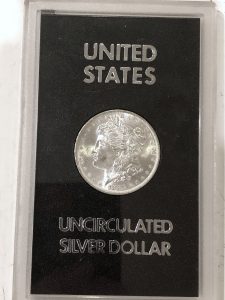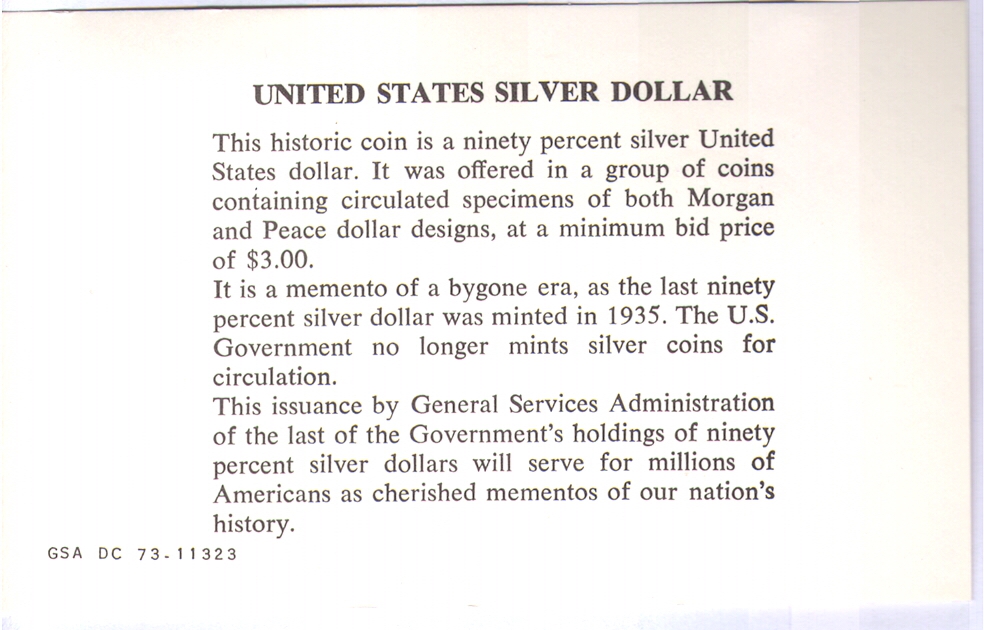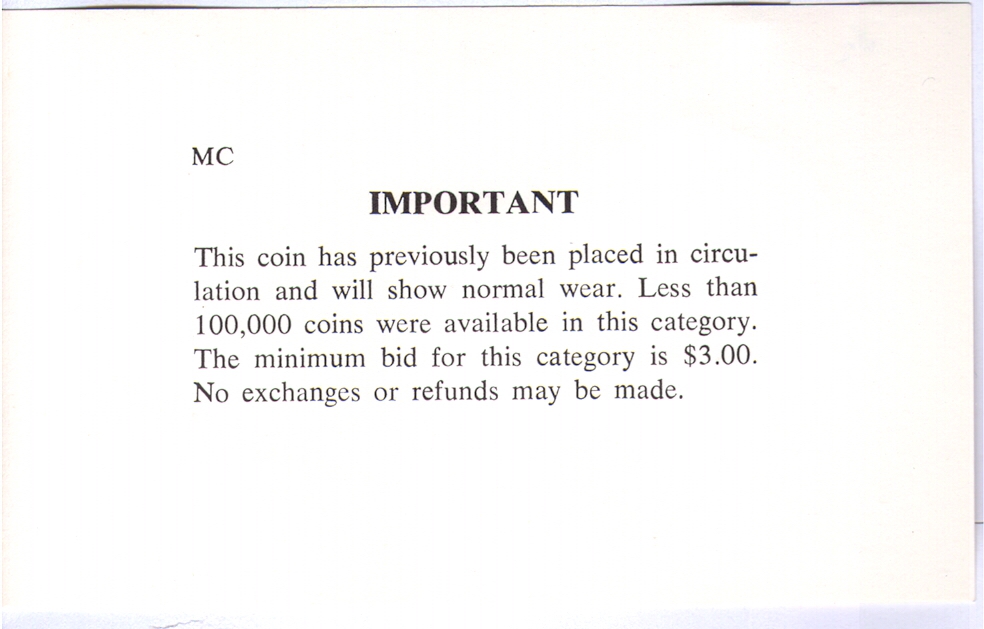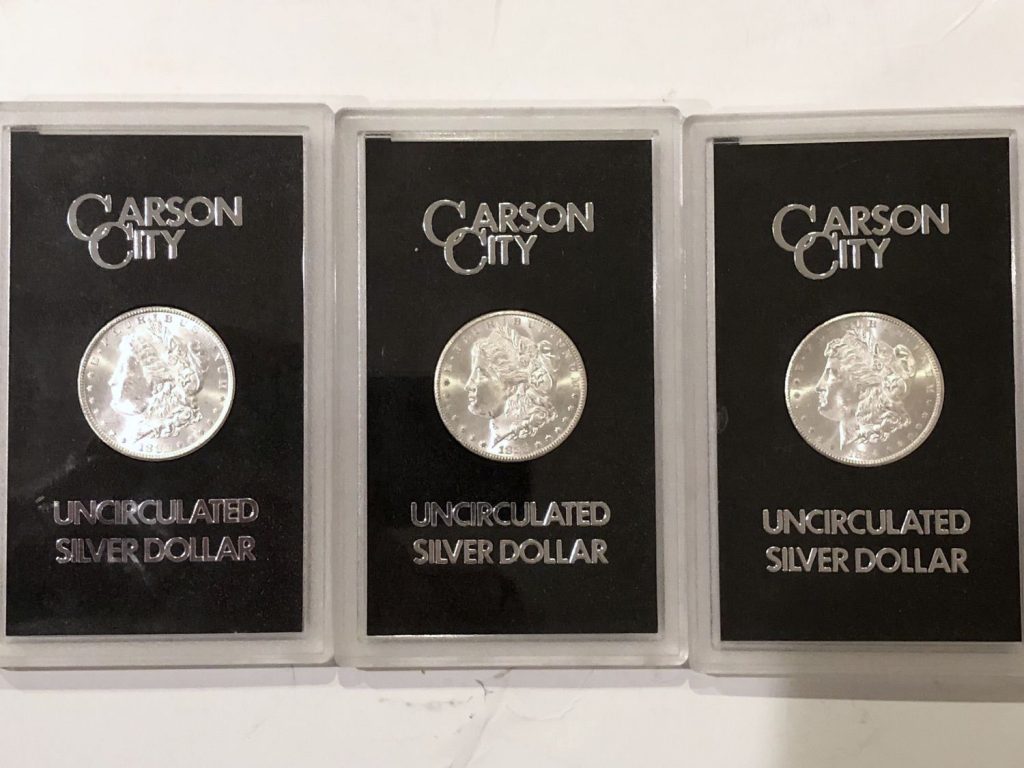How the GSA Changed Dollar Collecting
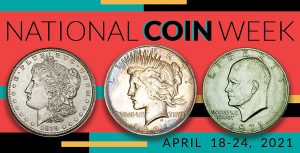 REMINDER: If you are not a member of the ANA, I will pay your 2021 Gold Membership dues for the first 25 readers of the Coin Collectors Blog who join during National Coin Week. All you have to do is click this link and use the Promotion Code NCW21SB when you check out.
REMINDER: If you are not a member of the ANA, I will pay your 2021 Gold Membership dues for the first 25 readers of the Coin Collectors Blog who join during National Coin Week. All you have to do is click this link and use the Promotion Code NCW21SB when you check out.
GSA Sale #3 stepped up its advertising (Image from u/GucciMamba666 on Reddit)
By 1964, the price of silver skyrocketed, making U.S. coins worth less than the metals used to make them. The economics led to a fiscal crisis that had the government rethinking the monetary system.
Silver coins were no longer required to back the U.S. dollar. Along with a law passed by Congress that ordered the General Services Administration to consolidate the government’s real estate usage came the discovery of the largest hoard in history.
Before the GSA started to clean out government-owned buildings, the government knew that they had stored silver coins in a few places. They did not know how many there were and the number of places they were stored.
Congress passed laws that caused over-production and hoarding. The Coinage Act of 1873, also called “The Crime of ’73,” caused a withdrawal of silver from the market. The Bland-Allison Act overturned it in 1878 that required the Treasury to purchase silver from U.S. mines to strike dollars for circulation. Since most silver mining was in Nevada, the Carson City Mint was striking more coins than needed.
The Sherman Silver Purchase Act became law in 1890. It raised the monthly amount of silver the Treasury purchased to 4.5 million ounces per month. The goal was to boost the economy to stem inflation. The law caused more dollars produced in Carson City with no place to distributed them.
To help Great Britain fund their war efforts, the Pittman Act authorized the melting of 350 million silver dollars to be sold at $1.00 per ounce. By the end of the war, over 270 million coins were melted for bullion. It was not enough to deplete the storage. The Act required the Mint to strike new coins with the silver repaid by Britain by 1933.
After several years of cleaning out vaults in different government-owned buildings, the GSA found 2,825,219 Morgan Dollars with the CC mintmark. They also found 112,145 coins from other branch mints. Within those additional coins, the GSA found 84,165 circulated Seated Liberty, Morgan, and Peace Dollars.
The government did not know what to do with the coins. Since they were in Treasury’s vaults, it was up to the Treasury to decide what to do with them. The Treasury’s role changed with the passage of the Federal Reserve Bank Act of 1913 and said that the best they could do was melt the coins. The U.S. Mint did not want the coins back since their job is to produce the coins. The Federal Reserve claimed it had no jurisdiction over the coins since the production and storage occurred before the formation of the Fed.
The GSA was the only agency that had experience liquidating government surplus. But these coins were not ordinary. Many collectors predicted that the sale of these coins would significantly change the numismatic market.
After the sale was over, the once rare 1882-1884 Carson City Dollars became more available. For example, the GSA found 962,638 of the 1,360,000 minted 1884-CC dollars in storage. It changed the rarity of the coins and the prices of previous purchases plunged.To sell these coins, the GSA created a special hardpack to hold the circulated coins. The hard-pack would be placed into a box with a certificate of authenticity, and the coins were made available through a mail-bid auction sale.
Coins struck in Carson City would be housed in a plastic case called a lens that said “Carson City” across the top. Other uncirculated coins were placed in a generic case. These coins are called GSA Morgans or GSA Non-CC Morgans.
For circulated coins, the GSA created the Soft Pack. The coins were sealed in mylar with a plastic token and placed in a blue envelope. Collectors refer to these coins as GSA Blue Packs. The GSA did not keep records of the number of Blue Packs sold. However, some have estimated that the GSA created about 100,000 Blue Packs.
- GSA Bluepack Envelope
- 1922 Peace Dollar in GSA Bluepack package
- GSA Bluepack COA
- GSA Information about the sale of the coins
From 1972 through 1980, the GSA held a series of eight sales. Most were mail-bid type auctions. The last two in 1980 were call-in bidding sales.
My father was cleaning his house, preparing to move into a condo before the pandemic shutdowns and found his GSA Morgan Dollars. He mailed the coins to me for my collection. Three are Carson City dollars, and one struck in New Orleans. My father purchased the coins during the first two GSA sales. He said that he tried to purchase more during the 1980 sales but was outbid.
I will eventually send the coins to NGC to have them graded in their original holder. For now, I found an online seller with four empty GSA boxes. Since I have the original Certificates of Authenticity, I will have complete packages.
GSA Preview Movie
Off to Baltimore
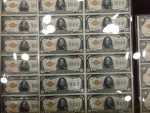
Just some small change at Bureau of Engraving and Printing Booth (Whitman Spring 2015)
If you are not into trying to watch the live updates or social media, here are widgets to both accounts and you can follow along here:
There should be two images on the Pinterest board from testing my workflow.
GEEKY BACKGROUND for those who wants to know what I did, otherwise, you can skip this: I created an ifttt recipe that searches for my tweets with hashtag #WBSE16 then posts the image to my specified board on Pinterest.
I will post a more comprehensive report after the show.
Mint is Not for Sale!
No, the U.S. Mint is not being privatized or sold to anyone. Given the significance of the date, I thought I would add to the fun.
If you read the post carefully, you would have noticed:
- The “Poboy Mint” was a play on Pobjoy Mint, the private mint based on Surrey, England. While the Pobjoy Mint strikes coins for other governments, particularly smaller members of the Commonwealth Realm, I don’t think they would be a candidate to buy U.S. government assets. Besides, they probably won’t make a good Po’ Boy sandwich!
- The Chairman of the House Financial Committee is Jeb Hensarling (R-TX). I don’t know who Jed Harding is or if that is the name of a real person.
- Similarly, the Chairman of the Senate Banking Committee is Richard Shelby (R-AL). In trying to come up with a translated name, all I could think about was Carroll Shelby, the man who created the AC Cobra and later the Ford Mustang Cobra.
- Brad Hoyle sounds like he should be a card game inventor but he is not Brendan Boyle (D-PA) who represents the Philadelphia district where the U.S. Mint is located.
- While Dana Gillette sounds like she might be a top sports broadcaster or spokesperson, Diana DeGette (D-CO) represents the fine people of Denver.
- MUSC doesn’t exist but musk is a substance secreted from a gland under the skin of a male musk deer that is used in perfumery. Without being mixed with other scents, musk does not smell good!
- Finally, congress is on spring break and (thankfully) not in Washington!
In short:
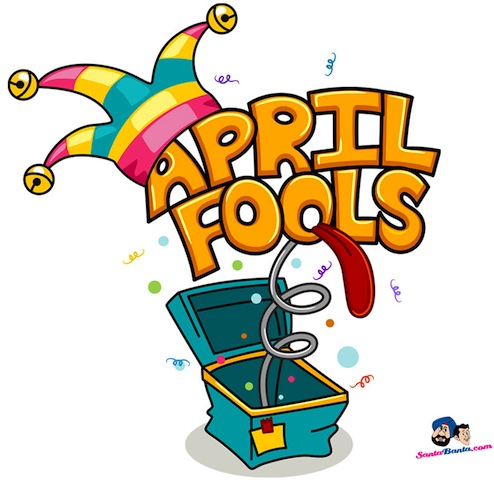
Like the Orson Well’s broadcast of The War of the Worlds, all you had to do is change the channel (or check another source).
That was fun!
Stand by for more on the Whitman Baltimore Spring Expo.
Congress Votes to Privatize the Mint
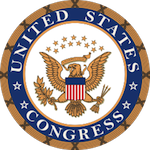 In what is seen as an election year move during a late night session, congress voted mostly along party lines to sell the U.S. Mint and its assets to a private corporation headed by the founders of the Poboy Mint.
In what is seen as an election year move during a late night session, congress voted mostly along party lines to sell the U.S. Mint and its assets to a private corporation headed by the founders of the Poboy Mint.
The measure moved quickly through congress after the bill was introduced by House Banking Committee Chairman Jed Harding. In his floor statement, Harding said that he and his senate counterpart Carroll Cobra have been discussing this with interested companies and other members for more than a year. They see it as a way to make money without making money.
Under the terms of the agreement, the current U.S. Mint properties will be leased to the Mint of the United States Corporation (MUSC), the new entity being created for this venture. They are required to use these facilities for 50 years at which time either party can end the agreement with 120-days notice.
Rep. Brad Hoyle said that he worked hard to ensure that the facility in Philadelphia remained. “The Mint employs a lot of people in Philadelphia,” Hoyle said. “We just couldn’t see all those jobs leaving.”
“Besides,” Hoyle continued, “how would it look if the city where the Mint started would lose the Mint after all these years? It would be devastating to our local economy.”
Dana Gillette, who represents Denver was note as upbeat. Gillette disagrees with the privatization efforts saying, “I know the constitution does not say that the government doesn’t have to own the Mint, but this is a bit too far.”
The transfer to MUSC will begin immediately, ending 224 years of operating as a government entity.
Spring for the Baltimore Expo
It has been a while since I have been to the Whitman Show. I am sure that some of the dealers have changed—I know a few have unfortunately passed on—but I think it is time for me to have some hobby time.
Since starting my business, there has not been a lot of time to work on a new collection even though I did start a Vickie Cent collection (Canadian Large Cents from the Queen Victoria era) a few months ago. Aside from the collectable bullion (Maple Leafs, Pandas, and Britannia), I think this would be a good opportunity to add to my Vickie Cent collection.
Of course it will give me a chance to look for something for my New York City collection. I am not sure what I have or need, but it is all about the hunt.
I will likely be Tweeting from the convention center so follow me on Twitter @coinsblog. I invite others to contribute by using the hashtag #WBSE16 (Whitman Baltimore Spring Expo ’16). More info on the social media following will be published here on Saturday morning. Stay tuned!
A little spring cleaning
 Spring has sprung and it is time to use the weekends to begin the outdoor tasks. Unfortunately, here in the D.C. area the weather was cool even had a persistent mist on Sunday. But that didn’t stop one spring cleaning chore I had.
Spring has sprung and it is time to use the weekends to begin the outdoor tasks. Unfortunately, here in the D.C. area the weather was cool even had a persistent mist on Sunday. But that didn’t stop one spring cleaning chore I had.
Although my writing has slowed a bit since starting my company, I have been trying to keep up. But as it happens, the blog needs a little maintenance, too. The new look and feel is fine. This time, it was time to look at some of the content and clean things up a bit. The changes I made updated the static information that you can find from the menu bar, above.
Here are the updates: [THIS LIST WAS UPDATED]
- All pages, except for the Numismatic Dictionary, now have a “Last Update” entry. This way if something is wrong someone can prod me!
- When you write something, you get very attached to it and the ability to properly proofread cannot get past your mind’s eye. This is the case with the Numismatic Dictionary. Not only did I correct spelling and grammar but also I was able to find a few entries whose wording would have tortured many English teachers.
- I also added a few terms to the dictionary. I forgot to note the words that I added but it was only 3-4 new entries.
- U.S. Coins by Type page has been updated to include:
- All modern commemorative coin programs passed by congress are now listed
- Added Ronald Reagan to the Presidential dollars and Nancy Reagan to the First Spouse gold coins
- Updated the American Eagle Platinum Proof program
- [ADDED] Added a section for the America the Beautiful Silver 5-ounce Bullion coins
- Added a section at the end for 24-karat gold coin special issues
- U.S. Coin and Currency Production has been updated to include:
- Change in directors at both the U.S. Mint and Bureau of Engraving and Printing
- Added the U.S. Secret Service
- A list of agencies has been placed at the top as links into the page to help someone searching for specific information
- Significant Legislation Effecting Numismatic now includes:
- Added the American 5-Cent Coin Design Continuity Act of 2003 because it is the law that created the Citizens Coinage Advisory Committee
- Added the Presidential $1 Coin Act of 2005 because it added 24-Karat bullion program
- Added an entry for Public Law 84-851 that added “IN GOD WE TRUST” as a national motto
- Under Join A Club a few of the web addresses have been updated.
As always, if you find an error contact me and let me know.
